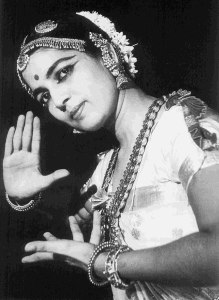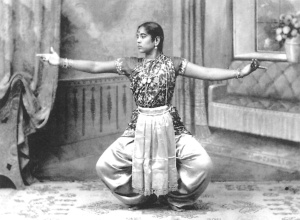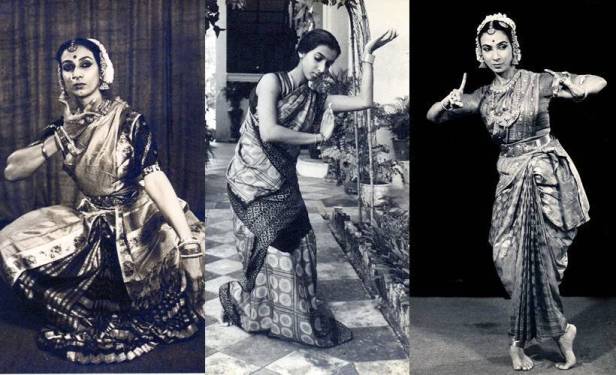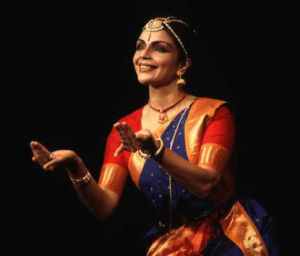A few days ago I attended my friend Apurva Karve’s Arangetram.
An Arangetram is an Indian classical dance disciple’s debut stage performance. It signifies that the pupil has successfully completed his/her training in that dance form, and can now give performances of his/her own and impart his/her knowledge to others. Seeking the blessings of Nataraja (Lord Shiva depicted as a cosmic dancer), bowing to his/her guru, the dancer showcases his/her skills and talent to the audience, engaging their senses in a divine confluence of Nritta (rhythmic movement), Nritya (expression of emotions) and Natya (dramatization of a story). Needless to say, it is a monumental occasion for the dancer.
A talented and expressive danseuse, Apurva has received training for over twelve years in the dance form Bharatanatyam under the able guidance of her guru, eminent dancer Mrs Meghana Sabade. I am glad that I could witness this happy event in her life. Her passion flowed through her graceful dance sequences, and emanated through every word in her speech of grateful acknowledgement. The whole experience was heart-warming and stirred my own love for dance, especially Bharatanatyam.

As stated on Wikipedia, Bharatanatyam or Bharathanatiyam is a major genre of Indian classical dance that originated in the Hindu temples of Tamil Nadu and neighbouring regions. Traditionally, Bharatanatyam has been a solo dance that was performed exclusively by women, and expressed Hindu religious themes and spiritual ideas, particularly of Shaivism, but also of Vaishnavism and Shaktism. Its theoretical foundations trace to the ancient Sanskrit text Natya Shastra and it is quite possibly the oldest classical dance tradition of India.
Bharatanatyam remained exclusive to Hindu temples up to and through the 19th century. It was banned by the colonial British government in 1910 because Christian missionaries and British officials accused the dance form to be a form of prostitution. Classical art revivalists such as E. Krishna Iyer persuaded the Indian community to protest against the ban and to reclaim Indian culture. Bharatanatyam was expanded outside the temples in the 20th century and revived as a mainstream dance by artistes such as Rukminidevi Arundale and Balasaraswati. Modern stage productions of Bharatanatyam have incorporated technical performances, pure dance based on non-religious ideas and fusion themes.

Wearing a colourful sari and adorned with jewellery the traditional Bharatanatyam danseuse proceeds to give a performance that follows a seven-part order of presentation.
The first part is the Alaripu. This is an invocation or vandana, seeking blessings of gods and goddesses, the guru and the accompanists. It also serves as a preliminary warm-up dance, enabling the dancer to loosen her body and achieve single-minded focus on her performance. Usually the nattuvanar (the conductor of the performance) plays cymbals and recites the bol (notations) to set a rhythm to the dance.
The next stage is called Jatiswaram. Melody is combined with movement to demonstrate the technical aspects of the dance form such as sequences of hand gestures (mudras) and footwork. The mridangam (drum) sets the beat to any Carnatic (South Indian music) raga and a beautiful concord of music, rhythm and movements is presented to the audience.
The performance then has Shabdam (expressed words). In this stage the solo dancer, the vocalist(s) and the musical team present short compositions, with words and meaning, which depict a spectrum of moods. The musical instruments comprising of the mridangam, the nagaswaram (a long pipe horn made of black wood), cymbals, the flute, the violin, and the veena or the sitar create a sublime atmosphere. The danseuse describes various emotions through a codified sign language comprising of meanings given to various hasta-mudras and facial expressions. The danseuse transports the audience into a deeply sensuous state.

The performance thereafter evolves into the Varnam stage. This is the core of the performance. It is the longest section. The danseuse presents a play or the main composition. Usually it is a recital of a legend or spiritual ideas derived from Hindu Vedic scriptures, the Mahabharata, the Ramayana, the Puranas and historic drama texts. The danseuse revels in all her movements, silently communicating the text through codified gestures and footwork – rhythmically punctuated to show the entry of different characters and changes in the plot – all in complete harmony with the music. The dancer performs complicated moves, such as expressing a verse at two speeds. Her hands and body tell a story, whether of love and longing, or of a battle between the good and the evil, as the musicians envelop her with musical notes and tones that set the appropriate mood.

The Padam follows next in the sequence of the performance. This is the stage of reverence, of simplicity, of abhinaya (expression) of a solemn spiritual message or a prayer (bhakti). The music is lighter, and usually consists of religious chants. The dance is an expression of devotion. The choreography attempts to express rasa (a combination of emotions and mood), while the recital may include items such as a keertanam (expressing devotion) or a javali (expressing divine love).
The performance sequence ends with a Tillana – the climax. The movements depart from the realm of expressive dance and return to become a series of pure rhythmic movement and music. The performance thus has a symmetry and completeness to it.

Words fail me to describe just how pure and divine the experience of watching a Bharatanatyam performance is! Most of the stories being depicted are well known to the audience, yet one cannot help but lose oneself in the world of words, gestures, rhythm and melodies. We become one with the characters, feeling their emotions, joining them in their adventures, empathizing with their sorrow and celebrating their joy! We are enveloped in the pure devotion articulated in holy shlokas. We are introduced to the deepest, most hidden chambers of our own thoughts and feelings, the core part of our consciousness which is beyond expression.
Such is the magic of Indian classical dance that every performance is a stirring experience, an ethereal sensation and a touching tribute to the rich culture and heritage of India!

Very well written and explained.
Thank you!